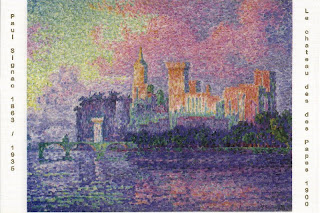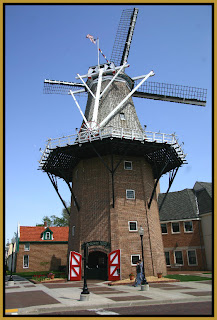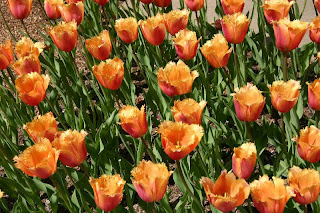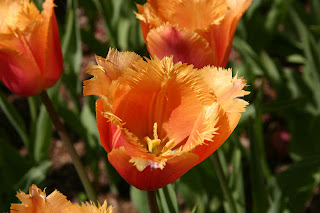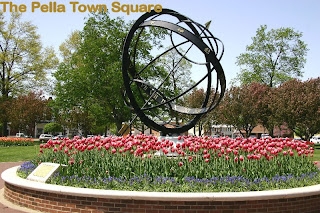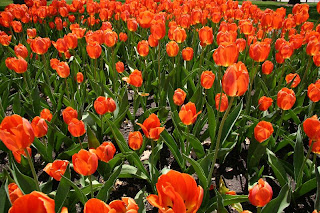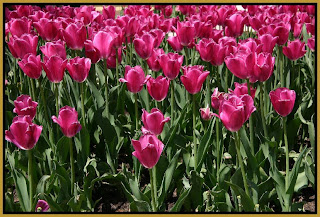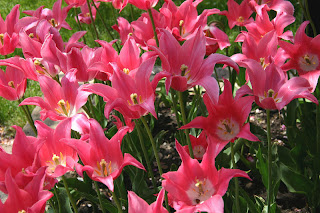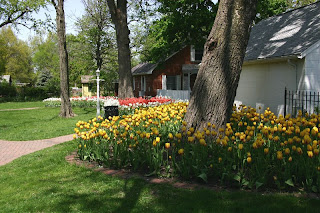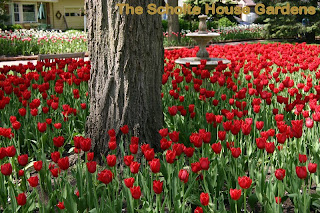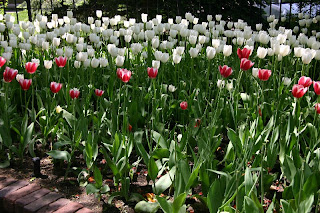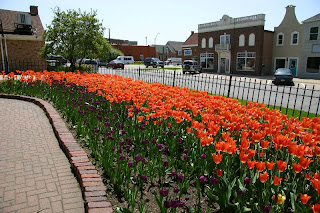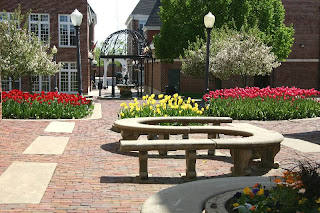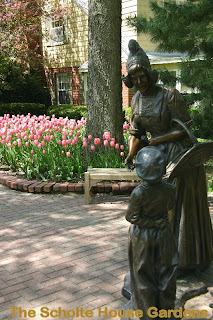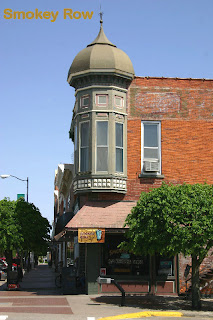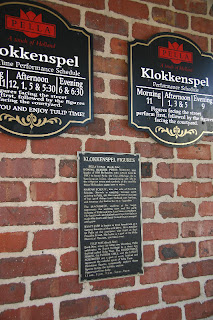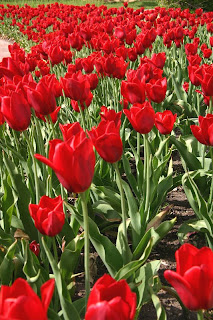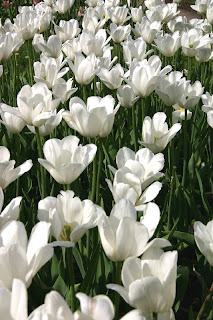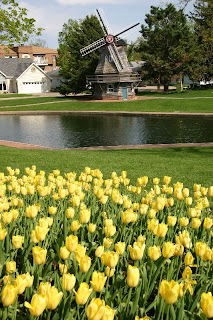
The first thing I want to do here is to say
“A Very Happy Mother’s Day” to all of you Mom’s out there as we day celebrate this “Holy of Holies” day. That is just a little pun from us Dad’s who better know exactly how very important the celebration of the second Sunday in May every year really is! As for my bride of almost 40 years now… I want to tell you that…
“I Love you even more today than the day I fell in love with you all those decades ago!” No kid could ever ask for a more loving mom than you are, and no husband could ever ask for a better wife to help raise his kids than you!” ~ “HAPPY MOTHER’S DAY to you Mrs. LZ!”Now on with my post… as many of you know, every year the “Oracle of Omaha” Warren Buffet (the Richest Man in the World) has his annual Shareholders Meeting in the Headquarters city of his company “Berkshire – Hathaway” in Omaha, Nebraska. This year I was one of those 31,000 guests of Berkshire – Hathaway at their annual meeting. It was really quite overwhelming. They refer to it as the “Woodstock of Capitalism” and I would say that was true even if just from a sheer numbers perspective. Although the meeting itself was very well done (and at times) very humorous and even entertaining, I plan to make this post about some of the things to do in Omaha and not so much about the shareholders meeting per se. The meeting was held at the newly built Qwest Centre in downtown Omaha.
Inside the welcome package given out to everyone was a small booklet about the things to do in Omaha. Many of those you may have heard of and others you probably had no idea that such a place even existed. Let me tell you about a few top picks on “LZ’s List of What to See” and do while you are there. The first one is also the photo on the top of my blog. It is not only the tallest thing in the city, but it is also the most noticeable part of the skyline. If you know anything about the Minneapolis skyline, you may think that this is the Wells Fargo Bank Building, but it is not. It is actually another bank though. It is called the First National Bank of Omaha.
If you ask very nicely the security will actually let you in the lobby there where you can admire the architecture from the inside. Additionally you can see what they have done in there too. The thing that I thought was very cool was the fact that the building that they tore down to build this bank building was partially saved (at least the façade) to re-use inside the lobby as an historical adornment. I’ll try and post one of those shots too. The lobby was also very cool because it was kind of like a greenhouse with all glass on both sides of the building. There were also very neat brass sculptures both inside and outside the building. The sculptures seemed to all be of prairie dwelling animals that Lewis & Clark may have found here as they mapped out a way to the Pacific Ocean via the Missouri River. This bank is privately owned by the Lauritzen family. (This will have significance much later in my post.)
The Missouri River is not only the Eastern border between Eastern Nebraska and Western Iowa, but it is also where the Eastern edge and border of the City of Omaha as well. They have almost completed a pedestrian bridge that runs from just a few hundred yards out of the back doors of the Qwest Centre and then over the Missouri River and back inside a park in Council Bluffs, Iowa. It was just a pity that it was not completed in time for the meeting! I am sure that Warren Buffett would have wished for it too? But I think they said it will be completed by November of this year.
There is also what is termed as the "Lewis & Clark Riverwalk" right along this same area, where we found a nice restaurant called "Rick Boatyard Café." This place looked like a knock-off of the styling of the Coronado Inn on the Coronado Isle just off of San Diego, California (for those of you familiar with that landmark hotel) . I don’t think this styling was by accident. But, it was a nice place to relax and have lunch, and although it was the Missouri River and not the Pacific Ocean, it did have a certain beach feel to it.
Another place on the list of things to do and see was the
"Old Market" (as it is called). This area was full of restaurants, boutiques and my favorite a real outdoor market that they called the
“Farmers’ Market”. This happens every Saturday morning from late spring through early fall. While this was primarily farmers bringing stuff that they grew in their fields, it was also full of stuff that other vendors like bee-keepers and florists brought to sell as well. I’ll put in a shot or two from the “Farmers’ Market” as well.
What would any trip to Omaha be without a trip to the world famous
“Boys Town” made famous by the 1936 movie of the same name by Spencer Tracey and Mickey Rooney?
When in Boys’ Town, you can see not only the farm, the schools and churches on the property, but you can take a car tour from a CD or cassette tape that will guide you around the huge facility and give you enough time to stop in each and every area that appeals to you. While on this trip you can also see the breathtaking Dowd Chapel and Father Flanagan Shrine, and discover how Father Flanagan sparked a revolution in childcare at the
“Hall of History”. When you are back at the Visitors Center, you can learn even more about Boys Town’s history and see all of the things of a historic nature relevant to the evolution on Boys Town. In 1916, Father Flanagan opened the Workingman's Hotel in Omaha, a place for homeless young men to live while they looked for work.
What you see on this wonderful campus today all came from a Catholic Priest (Father Edward Flanagan) who had a philosophy that
“There are no bad boys. There is only bad environment, bad training, bad example, bad thinking.” Another famous quote made famous by Boys Town was not from Father Flanagan, but instead directed to Father Flanagan, when one of the boys who was carrying his brother on his back stated;
“He aint’ heavy Father, he’s my brother”. You will also be able to see a statue or two around the campus that depict that quote and in fact it may even be a trademarked symbol of
“Boys Town”.Another compelling visitor choice is the Henry Doorly Zoo. This zoo is just packed full of things to do like many innovative facilities and exhibits to not only preserve a broad array of species, but to also vividly present them to the public. These facilities are exemplary to zoos throughout the country and the globe not unlike my last post about Australia’s Zoo. The Mutual of Omaha Wild Kingdom Pavilion, Lozier IMAX Theater, and Cat Complex all showcase fascinating wildlife and other exotic places. The Scott Aquarium and Lied Jungle, Desert Dome, Kingdoms of the Night, Hubbard Gorilla Valley and Hubbard Orangutan Forest provide immersive environments that display animals in their natural habitats and are all worth the visit.
If you don’t run out of time while doing the above, you can also check out right next door to the Zoo, where they play the College World Series each year at a place called Rosenblatt Stadium. This is where the College Worlds Series has been played every year for the last 50 years. Rosenblatt Stadium is also Home to the
“Omaha Royals” which is a farm club for the
Kansas City Royals. There was some buzz around town about building a new stadium for that purpose in the not too distant future.
My last suggestion is a very beautiful place (may be the prettiest in the city). Do you remember at the first part of this post in which I discussed the family that owns First National Bank? Well that family is part of the reason for this next item. It is called the Lauritzen Gardens. It is also called Omaha Botanical Center as well. But most of the money that built this wonderful place actually came from the then wife of the President of the bank. Mrs. Lauritzen has passed away recently, at a fairly young age, but they say she never lost her love of the gardens. I just loved the miniture Railroad that they have there which has the skyline of Omaha replacated using all natural items. I've never really seen anything quite like it before.
Lauritzen Gardens exists as the result of a unique public-private partnership. The garden has held a long-term property management agreement with the city of Omaha since 1993. In 1998, a 30-acre site, with prime visibility and easier vehicular access from Interstate 80, was purchased on the south end of the current property. This new addition increased the garden's total acreage to 100, and paved the way for the visitor and education center. Construction for the 32,000-square-foot center began in 2000. A year-round facility, it opened to the public in October of 2001 and features a floral display hall with seasonal flower shows, a unique gift shop, café, a resource library, banquet and meeting spaces, and classrooms.
To keep this beautiful and thriving organization running, the garden is privately funded, and relies on capital campaign contributions, event sponsorships, admissions, memberships and facility rental income. Nearly $20 million has been invested in the attraction to date. Lauritzen Gardens was so named following a generous contribution from the Lauritzen family, a family that has played a significant role in Omaha's history and development.
I haven't even mentioned the truly wonderful pink marble Joselyn Art Museum which was packed with beautful art from everywhere (and from every artist) you can imagine. To say nothing about the Heartland of America park with its Memorials and huge fountain and lake. Or what about the Durham Western Heritage Museum which is actually a converted Railroad Station in the days when train stations were in palce to be. It even had a working "Soda Fountain" like those that would have been around during World War II.
For those of you who thought, what in the heck is there to do in Omaha, Nebraska, like LZ and 31,000 of my closest “new friends”, you can now say; “There’s a lot to do in Omaha! You’d be surprised!” I know we were! Oh! and by the way... for those of you who are going to attend
Blogstock '08 in Tekamah, Nebraska this is the city you will perhaps even stay in and certainly will be flying into.
“Without God at the beginning, there can be only confusion at the end.” “No race that does not take care of its young can hope to survive—or deserves to survive.” ~ Father Edward Flanagan








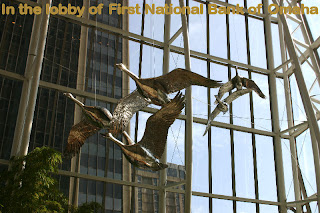


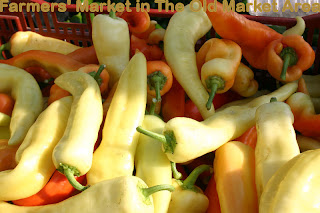
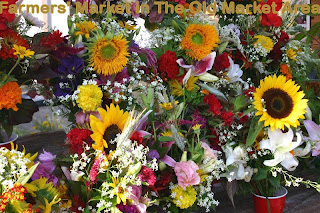





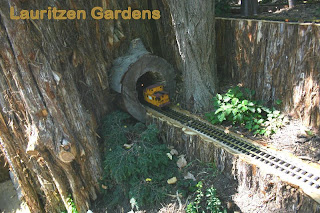
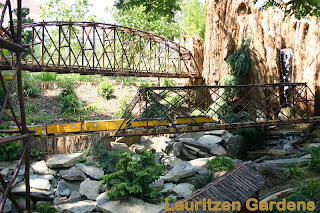


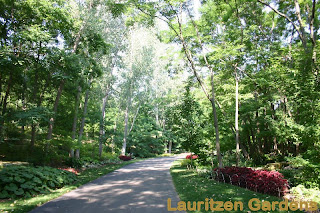





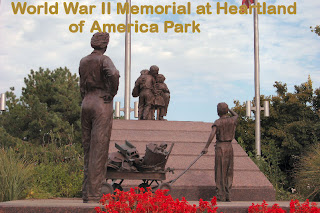






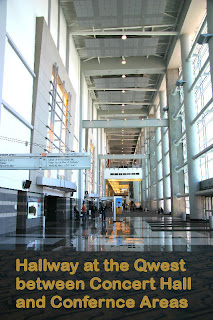
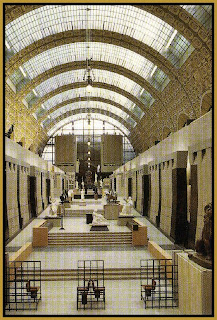 You know for a guy (like me) who has a love of both art and photography you would think that this would be a fun post, but this is a post that is not so much about my photographs and words as it is about the work of some of the world’s best impressionist artists and this fantastic building that they are housed in. I only had the idea to do this post while I was actually looking at some of the shots I did for my last post about all the tulips in Pella, Iowa of the tulips. They actually reminded me of seeing all of the impressionists works that were at the Musee D’Orsay in Paris. In particular, were the many works of Claude Monet that are kept in this one of a kind museum.
You know for a guy (like me) who has a love of both art and photography you would think that this would be a fun post, but this is a post that is not so much about my photographs and words as it is about the work of some of the world’s best impressionist artists and this fantastic building that they are housed in. I only had the idea to do this post while I was actually looking at some of the shots I did for my last post about all the tulips in Pella, Iowa of the tulips. They actually reminded me of seeing all of the impressionists works that were at the Musee D’Orsay in Paris. In particular, were the many works of Claude Monet that are kept in this one of a kind museum.



